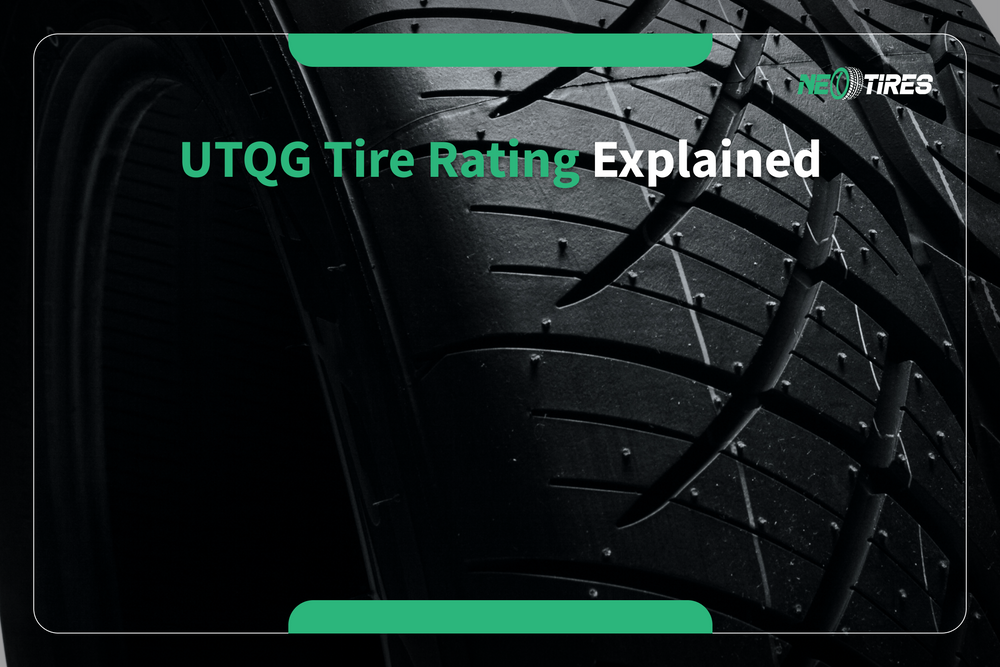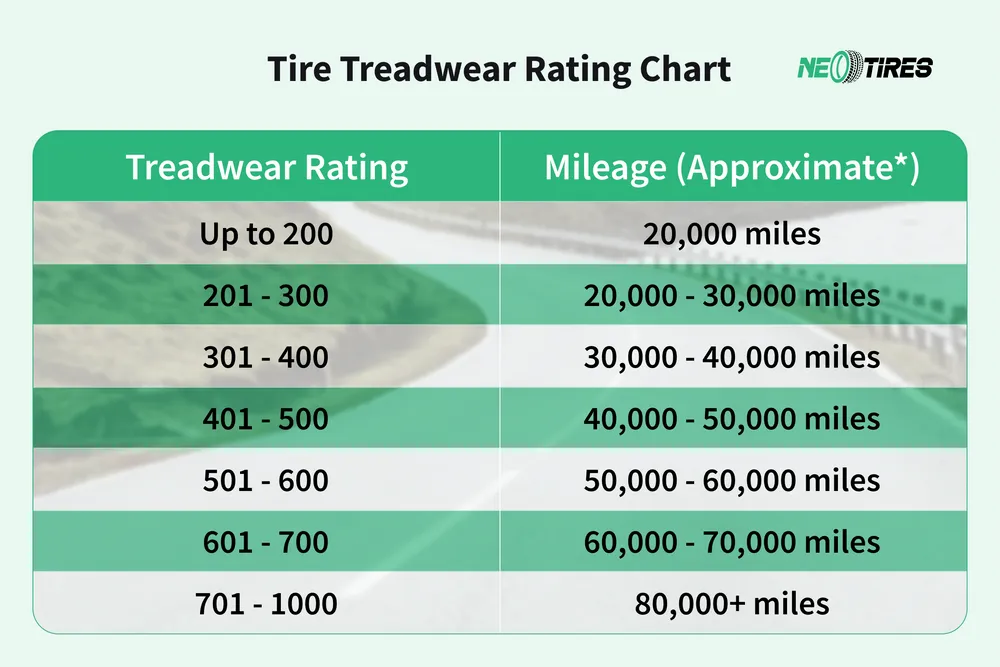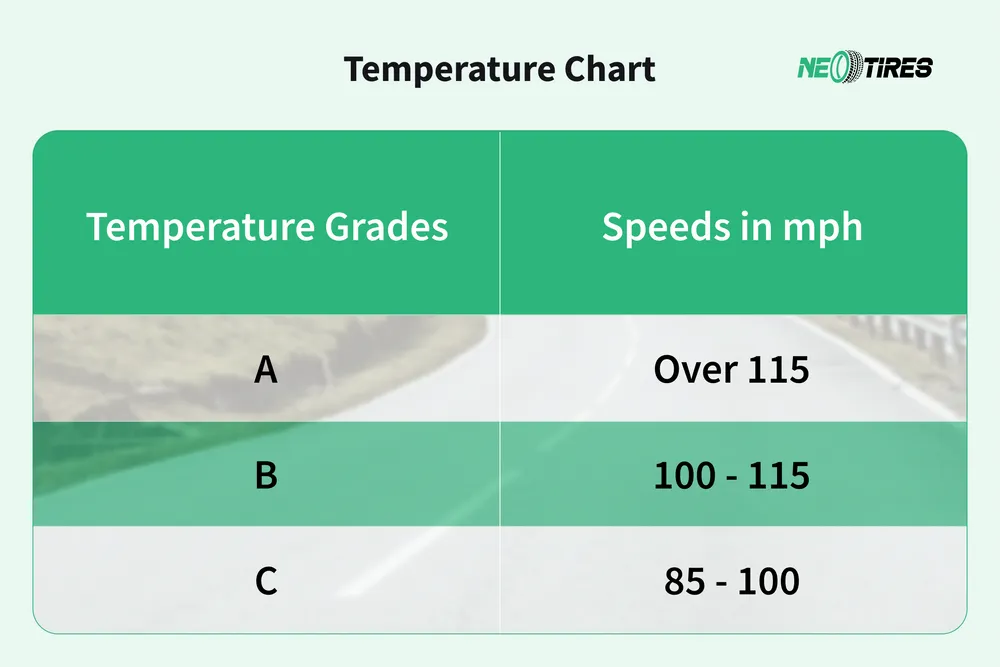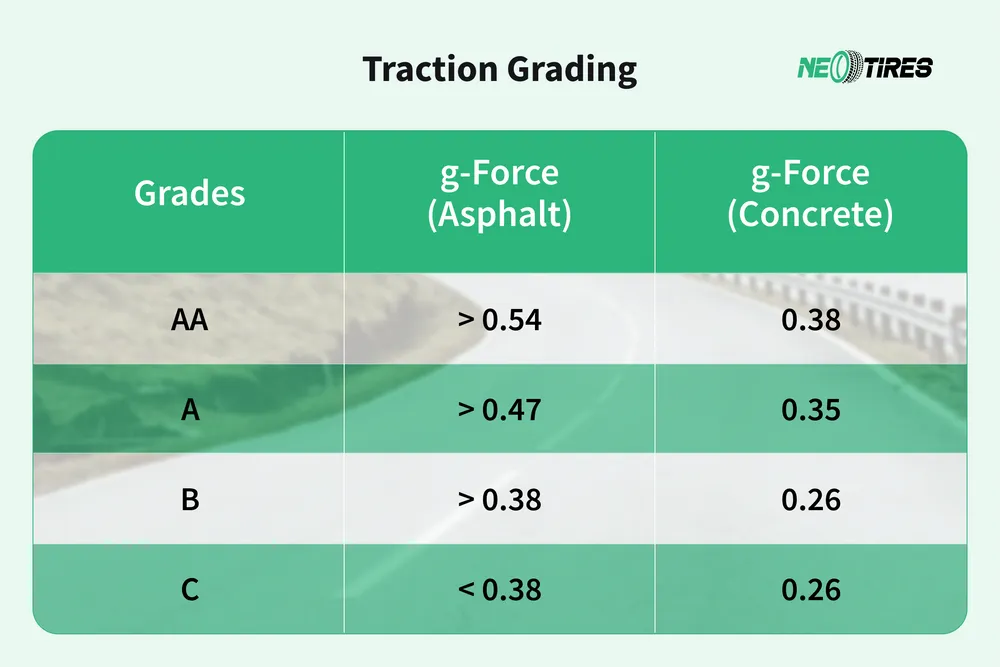Ever noticed numbers and letters on your tire’s sidewall, such as 400 A A? That’s your tire’s UTQG rating, a system that measures how long your tires last, how well they grip, and how much heat they can handle. The UTQG rating refers to a system coined by the National Highway Traffic Safety Administration of the U.S. used to grade tires in terms of temperature, traction, and wear. Here’s how to read it, what counts as a “good” rating, and how to use it to find the right tires for your driving style.
Watch the UTQG Video Explanation if you prefer the video version. Otherwise, let's proceed!
What Do the Letters UTQG Mean?
The "UTQG" stands for the Uniform Tire Quality Grade. This tire marking shows the temperature the tire can handle, its traction potential, and treadwear. The tire grade system ensures that tires meet the safety standards required by the Department of Transportation (DOT). Tire quality grade is specific for passenger tires except for winter, run-flat, or deep-tread LT tire models. The UTQG rating chart is provided in the table below:
UTQG Rating | What It Measures | Range | What’s Best |
Treadwear | Tire lifespan | 100–1000 | 400+ for long life |
Traction | Grip on wet roads | C → AA | A or AA |
Temperature | Heat resistance | C → A | A |
Read also the Comprehensive Guide to Tire E Load Rating to know more about tire ratings.
Tire Treadwear Rating Chart
The tire treadwear rating reflects its wear rate, tested under controlled conditions. The treadwear grade is expressed in a numerical value. It ranges from 100 to 1000. The higher value means longer tire tread life compared to tires with lower values.
For example, a tire with a 400 rating is expected to last twice as long as a tire with a treadwear rating of 200 under similar conditions. The tire treadwear grade is only an estimate of the tire's service life.
What is a Good Treadwear Rating?
| Treadwear Rating Range | Expected Tire Longevity | Recommended for: | Typical Use |
|---|---|---|---|
| 800+ | Very High (Longest-lasting) | Drivers looking for maximum tire life | Highway driving, mild conditions, passenger vehicles |
| 500 - 800 | High (Long-lasting) | Drivers prioritizing durability in everyday commutees | Daily driving, touring vehicles, moderate conditions |
| 300 - 500 | Moderate (Balanced) | Drivers looking for a balance between wear and performance | Mixed conditions (city + highway) |
| 100 - 300 | Low (Shorter lifespan) | Drivers looking for top-notch performance in sports cars | High-performance vehicles, spirited driving, track use |
Tire Temperature Rating Chart
The temperature rating in a tire refers how the tire resists to heat build-up. This grading has three markings: A, B, and C.
The A means the tire can easily handle hot conditions and high speed. The B rating means the tire is moderately resistant to heat. It is suitable for average temperature and standard driving conditions. The lowest C-rated tires are the least resistant to heat. They are usuitable for extreme driving and high speed.
What is a Good Tire Temperature Rating?
A good tire temperature rating is within A and B rating. The A rating is a good option for high-speed, performance, and driving in hot climate. The B rating is a good option for regular driving. The C tire rating works well for low-speed or controlled driving. Tires wih C rating should never be used for extreme driving.
| Rating | Heat Dissipation | Recomended For: | Typical Use |
| A | Excellent heat resistance | High-speed driving, performance cars, hot climates | Sports cars, highway driving in hot temperatures, racing |
| B | Moderate heat resistance | Everyday driving, mild conditions, standard driving style | Standard vehicles, moderate climates, commuting |
| C | Low heat resistance | Controlled environments, low-speed driving | Budget tires, vehicles with low-speed demands |
Tire Traction Rating Chart
The traction grade refers to the tire's ability to grip the road and brake in wet conditions. This grading can be AA (the highest), A (good), B (fair), and C (lowest). Accordingly, an AA tire delivers the best traction and grip, especially on wet roads. An A-rated tire offers solid traction in standard driving conditions. The B rating means the tire is good in less demanding conditions. Finally, the C-rating tire provides the lowest performance and traction in wet conditions.
What Is a Good Tire Traction Grade?
The "AA" rating is the safest tire rating. It ensures high performance and safety. Tires with AA traction grade are tipycally suitable for performance and racing cars. They provide best grip, traction and braking, especially in wet conditions.
| Traction Rating | Grip Performance | Best For | Typical Use |
| AA (Highest) | Excellent grip, best for safety and handling | Performance vehicles, high-speed driving, wet conditions | Sports cars, high-performance vehicles, rainy climates |
| A (Good) | Good grip for everyday driving | Most standard vehicles, regular conditions | Commuters, family vehicles, wet conditions |
| B (Fair) | Moderate grip | Budget-conscious vehicles or less demanding conditions | Economy cars, low-performance vehicles |
| C (Lowest) | Low grip, very rare | Not commonly used, low-performance tires | Specialized tires, not meant for high-demand conditions |
Tire Quality Grade: FAQs
What Is UTQG Meaning?
The UTQG rating refers to the Uniform Tire Quality Grading. It refers to treadwear, traction, and temperature grades for passenger tires established in the tire manufacturing process.
Is a Higher UTQG Rating Better?
Yes, the higher the rating is tipically better. The AA rating means better traction and a shorter braking distance than the C rating. A tire with a 600 rating usually provides better treadwear than a tire with 200 rating. In terms of temperature resistance, the A-rated tire dissipates heat better at high speed compared to a C-rated tire.
How To Read UTQG?
The tire quality grade is printed on the sidewall of the tire as a combination of letters and numbers like in the example: TREADWEAR 500 TRACTION A TEMPERATURE A, meaning the tire should last 4x the baseline, has excellent wet traction, and can safely handle high-speed driving.








